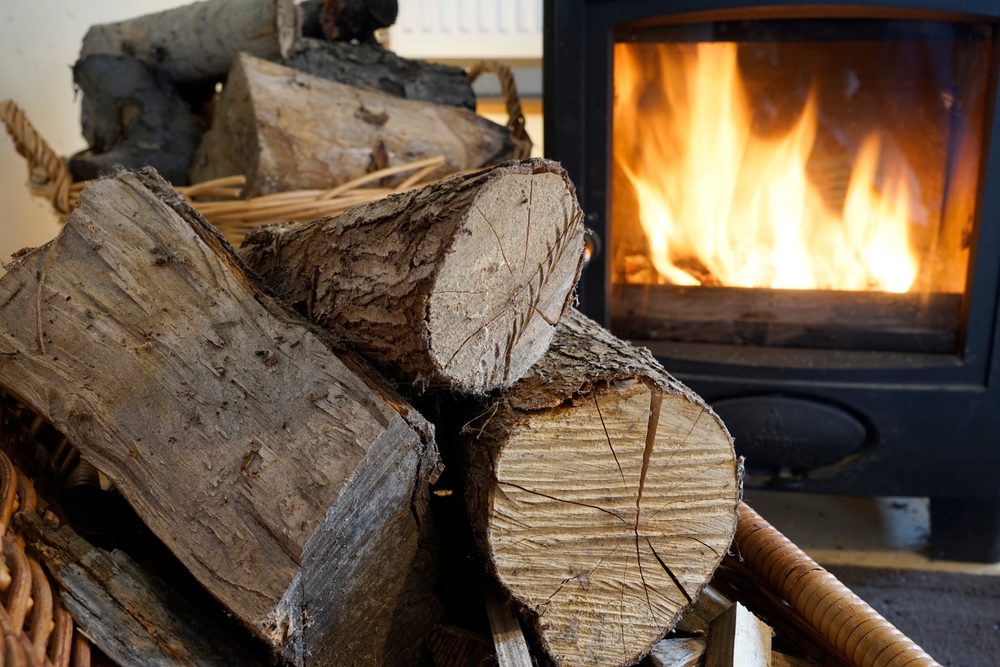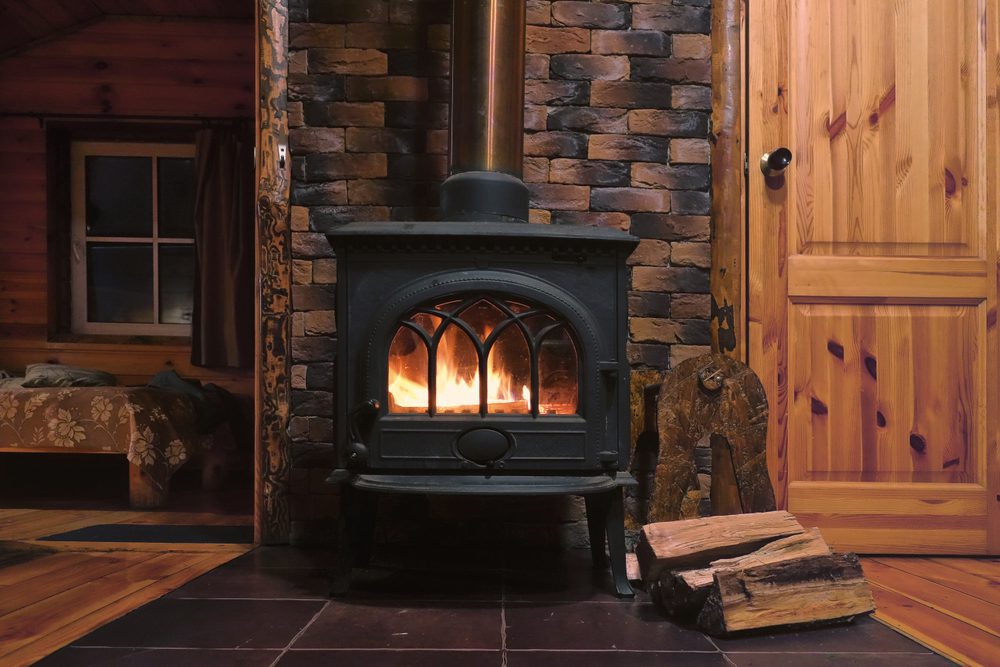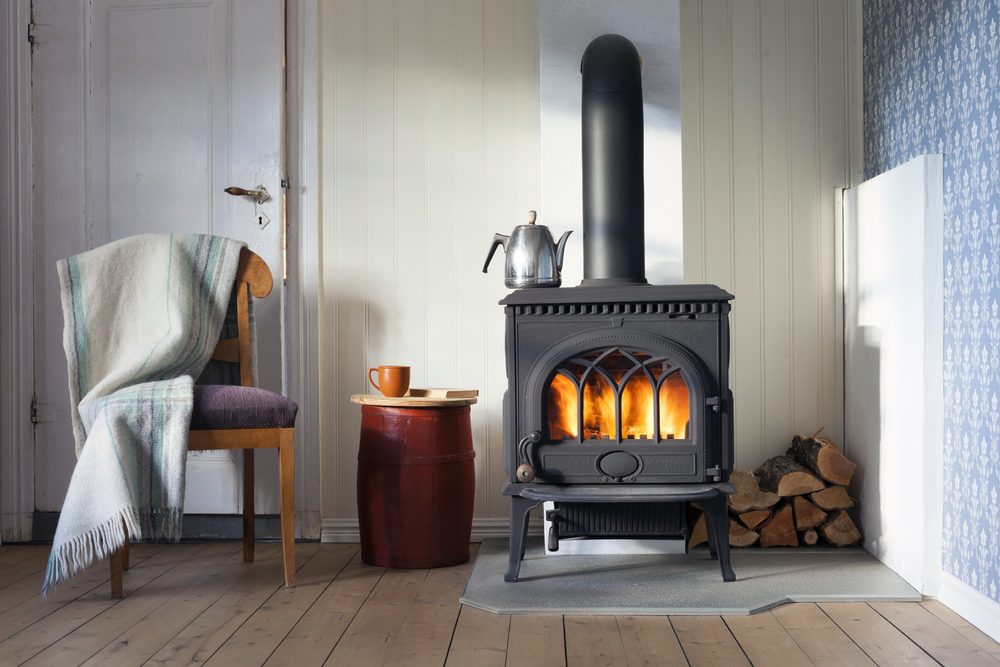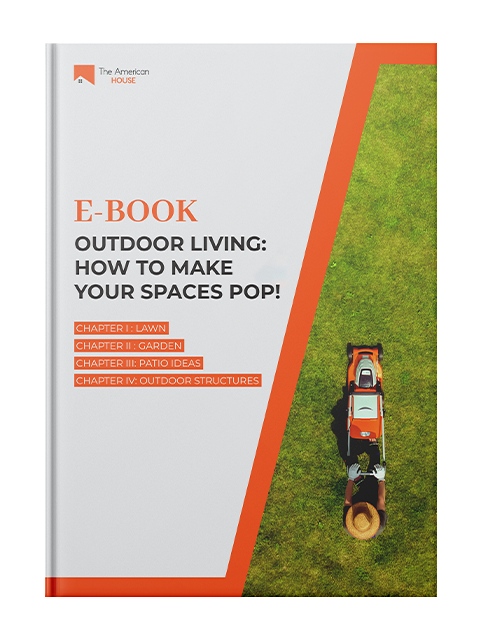If you’re wondering why a wood stove would be a wonderful idea for your home, you’ll be pleased to know that there are many pros. First, it would reduce your reliance on the grid, which is always a good thing. Besides, the fact that wood is way more renewable than any other resource (yes, I’m referring to oil and gas) is another good reason.
Maybe it also has to do with tapping into your inner pioneer, frontiersperson, and lumberjack. Last but not least, it has a tremendous aesthetic appeal. Just think of those nice crackling sounds that comfort, the amazing homey scent, and the flattering glow it will bring to everyone’s faces.
If there’s one con, it is probably maintenance. But here are the best dos and don’ts that you need to know when it comes to wood stoves.

Do clean a wood stove on a regular basis.
How often your wood stove requires upkeep mainly depends on how frequently you use it and the type of wood you’re using for burning. Believe it or not, some generate more ash than others. A stove that’s used to heat the entire home will also need ashes removed every couple of days, while less frequent users can simply wait until the ashes pile higher.
But don’t worry, we’ll get back on ash removal below. Make sure you clean the exterior of the stove with a very soft and dry rag, or even vacuum it with your vacuum’s brush attachment. For wood stoves with glass doors and windows, you might want to use a dedicated glass cleaner, not the same old blue stuff you use for your bathroom mirror.
Don’t clean the stove unless it’s unlit.
Just wait until your wood stove is unlit and completely cool before you try any kind of cleaning or maintenance. For very obvious reasons, fussing with a box full of fire in full blaze might not end well.
Do inspect the stove as often as you can.
Just try to get into the habit of glancing at your stove’s most vulnerable spots every time you add wood. You should check if there’s anything amiss with the doors, windows, seals, hinges, gaskets, ash drawer, screens, glass, or even damper. Then, take the needed action to replace or simply fix the faulty parts before you set fire again.
Don’t forget about the flue and chimney.
You could make a visual inspection of the flue from inside your house, but it’s probably much easier to see it from above, looking down the chimney. When creosote, the result of incomplete combustion in your stove, builds up inside, it can be extremely dangerous.
Unfortunately, it can also be quite difficult to remove it. For this situation in particular, you might want to hire a professional chimney sweep to do the job for you. Make sure you keep it on top of your maintenance schedules, so you can ensure that the flu is clean and your family is 100% safe.
Don’t tackle chimney cleaning yourself.
The question is, can you clean these essential elements of any wood-burning feature on a DIY basis? Well, the answer will be yes, followed by a but. Off the bat, you will have to be comfortable with the heights and feel secure enough to go up on the roof.
The creosote buildup should be less than 1/8 inch if you’re deciding to tackle it yourself. And you might also need some specialized, expensive tools for this particular job. A chimney pro could also inspect your system for signs of previous, undetected chimney fires and even safeguard it against other fires.
The Chimney Safety Institute of America would highly recommend that all homeowners schedule a professional chimney cleaning at least once a year.

Do away with ashes.
Where there’s smoke, there’s also fire. And following this, where there’s fire, there’s also ash. The sooty stuff doesn’t really represent a threat until it seriously restricts that space inside your stove’s firebox.
When you simply can’t add enough wood for a proper long and hot burn or when you notice the embers tumbling out when opening the door, you need to grab that ash bucket or even the vacuum. Make sure you also wear gloves, maybe goggles, to protect your eyes from airborne ash particles.
But don’t get rid of all of them.
Lazy cleaners, you will be happy to know that, unlike many other surfaces in your home, the bottom of a wood stove’s firebox shouldn’t be scrubbed until it completely shines. Yes, indeed! In fact, you would want to leave a bed of ash behind—about one inch, maybe a bit more. This serves to insulate the firebox and the embers, helping the seat stay where it has to.
Make sure you dispose of the ashes properly.
You can start by emptying the ash box or drawer, if the stove even has one. Not all do, though. Next, you want to use a small spray bottle to spritz the ashes with some water, just enough to dampen them down and prevent them from flying all over.
During the entire process, keep safety a top priority. It’s very common for ashes to hide small, smoldering embers. In fact, if they’re transferred to plastic buckets, sucked up into vacuums, or even dumped carelessly in the yard or the garbage can, they could easily melt surfaces or reignite, causing serious problems.
Once you’re sure the ashes are ember-free and there’s really no more combustion taking place, you can dispose of them with your regular trash and put them in compost. In fact, you could even spread them on your garden beds.
Some people could even use the ashes instead of ice melting on their slippery steps. Others prefer dumping them into an outdoor firepit throughout the winter and then disposing of the entire mess when spring comes.
Do use purpose-built metal tools.
Steel, galvanized steel, and even cast iron are some of our top choices when it comes to ash-removal accessories and other fireplace tools that you might need for poking logs and dealing with stray embers. In fact, there’s a wide variety of dedicated ash shovels, scoopers, sisters, dustpans, and even brushes that would perfectly fit every home and every budget.
Don’t use plastic or any other non-metal tools.
I’m talking to you, you frugal fire lovers who might try to save money by replacing tools that aren’t made for such high temperatures! And yes, we get it: if you have a garage filled with all kinds of pails, buckets, shovels, and brooms, it’s quite hard on a practical level to shell out for newer ones.
But in this particular case, you might have a good reason to justify the entire purchase. Don’t run the risk of melting or even completely ruining plastic buckets or brooms. Also, never put ashes directly from the stove into garbage bags or bins.
You want to keep the ashes away from other trash and debris, especially if it’s anything flammable. It’s truly not worth the risk. Your home, your family’s health, and your lives are riding on your fireplace and wood stove safety practices.
If you found this article useful, you definitely need to try this one, too: 12 Cost-Effective Drywall Alternatives That Will Last Longer





